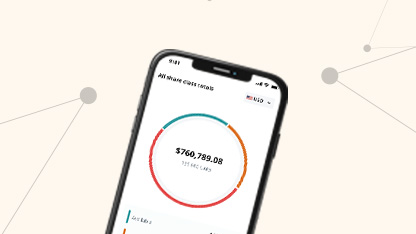Employee Stock Purchase Plan (ESPP) administrators can often find themselves scratching their heads: Why is my ESPP enrollment rate underachieving? Since ESPPs are a great benefit for employees as they can help to build wealth and allow employees to achieve personal goals, there must be some reasons for low uptake rates.
To motivate your employees to participate in an ESPP, you need to ensure the plan appeals to your employees and its value and benefits are well communicated. Here are 7 actionable tips to help you boost the ESPP participation rate:
1. Measure participation rates
What gets measured matters.
If you’re already measuring participation rates, review the way you do it. For example, try to understand the participation by gender, income level, country, age, etc., and then drill down into each dimension to ask why this group did or did not enroll in the plan.
If you just have one single number, it can be hard to comprehend the holistic ESPP participation situation, which is why looking into the details is important.
2. Review plan design, e.g. discount and ESPP lookback
Up to a 15% discount can be offered under a qualified plan while a non-qualified plan allows for an even higher discount or matching shares. The greater the plan discount, the more attractive it will likely become to employees.
According to a 2023 ESPP survey conducted by NASPP and Deloitte, 85% of companies offer a 15% discount. If you only offer a 5% or 10% discount, your plan is unlikely to attract employees, particularly in a market environment with higher interest rates.
To make it even more appealing, consider introducing a lookback provision. This benefits participants because it means the plan discount can be applied to the stock price either at the purchase date or the grant date, whichever is lower. (Read more: ESPP explained) The same survey reveals that 83% of companies offer a lookback provision.
More ESPP design components can be found in our academy.
3. Adopt a flexible plan
People like flexibility.
Circumstances change. If employees know that they can change the amount of their contributions, and withdraw or suspend the plan in the middle of the program, it’s more likely for them to enroll.
Make sure to clearly explain the benefits of flexibility to your employees.
CONTACT BLOCK
4. Plan for the enrollment stage
You should allow enough time for your employees to enroll – usually between two weeks and one month prior to the official launch date. If this period is too short, they won’t have time to do research and ask any questions they may have.
If you partner with an ESPP service provider, make use of their online enrollment system. Online enrollment can help achieve better participation results, and improve administration efficiencies and data accuracy.
Don’t forget to plan a robust communication strategy around this time too to boost awareness.
5. Improve employee communications and education
When it comes to communicating the details of an ESPP to your people, you should be guided by an understanding of your target audience and their specific circumstances.
Consider how they get their information. For example, if the bulk of your workforce is factory floor-based, then you might emphasize posters, and on-site presentations, whereas if your people are mainly office-based, then you may focus on email updates and webinars.
Make sure to explain it all in clear, jargon-free language. If you can do that with examples, charts, graphics etc, then it’ll be even more digestible, especially for those who are new to ESPP.
Nothing can sink your ESPP enrollment faster than employees not understanding what exactly they’re enrolling in. If they don’t understand it, they won’t trust it and they’ll be less likely to sign-up.
6. Get feedback from participants
Communication is a two-way street. Too often, companies focus on throwing out as much information as possible. But the other side – what employees think and feel – is arguably more important.
For some channels like workshops or town hall meetings, it’s easier to interact with employees. Even if you can’t organize them, make sure to provide simple ways e.g. email, or online forms, to get feedback from your employees. Encourage them to ask questions.
There’s no point spending time on a plan that doesn’t actually help your staff. If they don’t find it beneficial, they won’t enroll.
7. Empower participants to manage their ESPP shares
If your ESPP service provider offers an employee portal for each of your participants, take advantage of it to help improve enrollment rates.
Participants can log onto their portal to track, manage and trade their ESPP shares. They would typically also have direct access to their contracts, documents, statements, etc., as well as customer support to help them navigate their equity. These features will enable them to control and understand their own equity assets more effectively, and can result in helping to boost enrollment rates
Find out more
To increase your ESPP’s participation rate, you sometimes need to try to figure out the right approaches to fit your specific situation.
Whether you’ve already tried these options, or are unsure where to start, contact us today. We have over 15 years of hands-on experience in ESPP management at J.P. Morgan Workplace Solutions, and we’d be more than happy to help you with it.
This publication contains general information only and J.P. Morgan Workplace Solutions is not, through this article, issuing any advice, be it legal, financial, tax-related, business-related, professional or other. J.P. Morgan Workplace Solutions’ Insights is not a substitute for professional advice and should not be used as such. J.P. Morgan Workplace Solutions does not assume any liability for reliance on the information provided herein.



